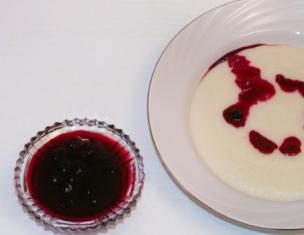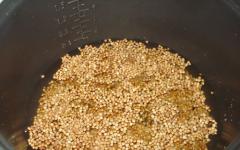Mango is popular because it is juicy, tasty and healthy fruit. It is often used in the preparation of various exotic dishes, sauces, seasonings and salads. But not everyone is aware of how to properly peel a mango. Consider the most common cleaning methods.
Is it worth it to peel the fruit?
As in the juicy pulp of the fruit, the peel of the mango contains many substances that are beneficial to human health. It is often used in folk medicine for preventive and therapeutic purposes. But is it worth eating? The question is moot. Some people enjoy chewing the rinds, while others don't like the specific taste. It is important to remember that unlike mango pulp, the peel can cause allergic reactions in people prone to this disease. Allergy sufferers are advised not only to peel mangoes, but also to do it with rubber gloves.
- The first way is rather banal. You can peel a mango with a regular kitchen knife or a special vegetable peeler. You just need to cut off the peel, as in the case of potatoes or apples. This method, along with ease, has a number of disadvantages. For example, when removing the peel, a large amount of sweet juice will flow out, and sticky splashes will fly off in different directions, staining clothes, furniture and everything else.
- The second cleaning method is as follows. Using a sharp knife, cut the mango slices around the pit. We discard the bone and continue the procedure. It is better to make all the manipulations on the plate so that the flowing juice can be drunk at the end. We take the cut half in our hand and make cuts with a knife from the side of the pulp so that the peel remains unharmed. Patterns can be different: squares, diamonds, rectangles. After the slice is cut, you need to press on the peel from the outside, as if turning the half of the fruit inside out. Carefully cut off the convex pulp with a knife at the base and lay it on a plate. This method of cleaning is classic and is most often found when serving.

- The simple way is the following. We simply cut the unpeeled fruit into slices up to the very bone, removing it. Then we just eat the pulp, leaving the peel. The process is similar to eating a slice of watermelon or melon.
- Any mango fruit is incredibly juicy. If an overripe unit was caught during the purchase, there will be many times more juice in it. This processing method is suitable for such fruits. Using a sharp knife, you need to cut the mango along all the way to the very bone, so that the result is two cast halves with a notch from the stone in the middle. Then you can eat mango with a spoon, enjoying the ripe and juicy taste. It is better to cut the fruit on a plate so that the excess juice that flows out does not go to waste.
- Another manipulation for a ripe and rather soft fruit. Using a sharp knife, cut the mango into slices of any size, if desired. Next, with a knife or spoon, separate the pieces of pulp from the peel. This method is suitable if you use sweet pulp to make a sauce or other dish. You can also just eat the product by drinking the juice from the plate.
- Another helpful tip. The fruit is ripe, but hard. We take a sharp kitchen knife or vegetable peeler and peel the fruit like a potato or an apple. Then, with a knife, we cut the fruit into slices along the entire length, deepening to the very bone. Next, simply separate the slices from the bone and carefully cut off the skin. Lay out on a platter. Not forgetting the large amount of juice, we perform all the manipulations on the plate.
- If mango pulp is needed to prepare a dish or sauce, it will still be crushed, for example, in a blender. For such cases, the method of cleaning with a glass is suitable. We take a soft overripe fruit and cut it lengthwise, deepening to the bone. We separate and get two equal halves without a bone. We take an ordinary glass with one hand and a slice of mango with the other. We place the half so that the pulp looks towards the inside of the cup, and the peel outward. Next, we strongly press on the fetus, as if bifurcating it. As a result, the pulp is peeled and, together with the juice, falls deep into the glass. The fruit is cleaned.


2 important rules
- Before starting any of the above procedures, the fetus must be thoroughly washed with running water and blotted with excess moisture with a clean, dry towel or napkin.
- When cutting the fruit, you need to be careful not to damage the bone with a knife. Otherwise, bone elements can get into the pulp and cause some inconvenience when consumed.

People eat mangoes for weight loss, treatment of diseases associated with the genitourinary system and gastrointestinal disorders, as well as many other problems in the body. Mango gives health, beauty and pleasure from the use of a juicy and sweet exotic product. Using any cleaning method you like from those described above, you can cope with the peel and please yourself and your family with yummy desserts.









